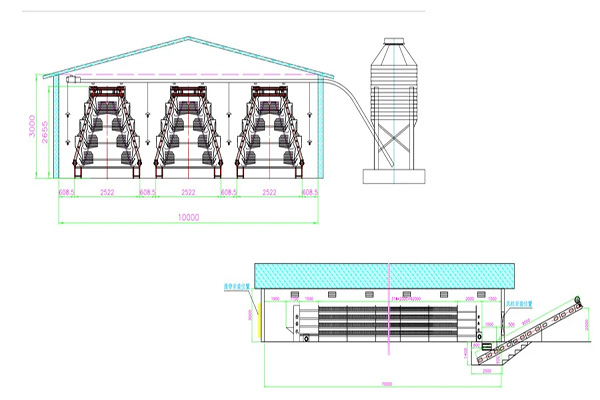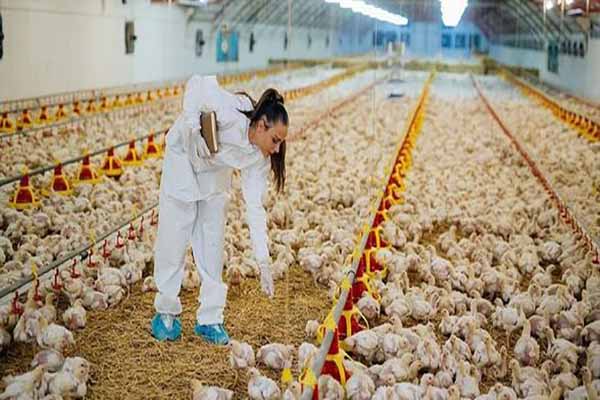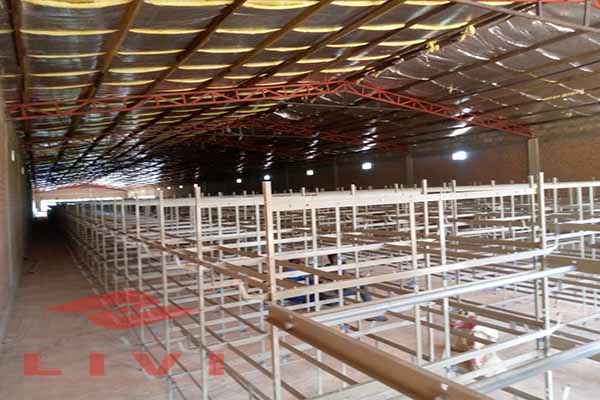Poultry Climate Control System for 200,000 Chickens in Togo: A Comprehensive Guide
Understanding the Need for Climate Control in Poultry Farming
The poultry industry in Togo, like many other regions, faces unique challenges in maintaining optimal conditions for 200,000 chickens. Climate control is crucial for ensuring the health and productivity of the flock. This article delves into the essentials of a poultry climate control system tailored for such a large-scale operation.
To begin with, a poultry climate control system must address several key factors:
- Temperature regulation
- Humidity control
- Air quality management
- Energy efficiency
Components of a Poultry Climate Control System
A comprehensive poultry climate control system for 200,000 chickens in Togo should include the following components:
1. Temperature Regulation
Temperature is a critical factor in poultry farming. The ideal temperature for chickens varies depending on their age and stage of growth. For example, chicks require a higher temperature than mature birds. A reliable heating and cooling system is essential to maintain the desired temperature.
According to a study by the International Poultry Council, a well-regulated temperature can increase productivity by up to 15%. Here are some key points to consider when choosing a temperature control system:
- Automated thermostats for precise temperature control
- Insulation to retain heat during cooler months
- Heat exchangers to prevent overheating during warmer periods

2. Humidity Control
Humidity levels in poultry houses should be maintained between 40% and 70%. Excessive humidity can lead to respiratory issues and other health problems in chickens. A dehumidification system is necessary to regulate humidity levels.
Some key considerations for humidity control include:
- Desiccant dehumidifiers for efficient moisture removal
- Humidity sensors to monitor and adjust humidity levels
- Evaporative cooling systems to help lower humidity during hot weather
3. Air Quality Management
Air quality is crucial for the health of chickens. A ventilation system that ensures a continuous flow of fresh air is essential. Here are some key components of an effective air quality management system:
- Positive pressure ventilation to prevent the entry of dust and pathogens
- Filter systems to remove particulates and contaminants from the air
- UV germicidal lamps to kill bacteria and viruses in the air
4. Energy Efficiency
Energy consumption is a significant concern for poultry farmers. An energy-efficient climate control system can reduce operating costs and minimize the environmental impact. Consider the following when selecting an energy-efficient system:
- High-efficiency heating and cooling equipment
- Smart controls to optimize energy usage
- Renewable energy sources, such as solar panels

Conclusion
Investing in a poultry climate control system for 200,000 chickens in Togo is essential for ensuring the health, productivity, and profitability of your operation. By considering the factors outlined in this article, you can create an optimal environment for your chickens and achieve long-term success.
For more information on poultry climate control systems and to receive a free, customized design and equipment quote from LIVI Mechanical, please leave a comment below or contact us directly.





